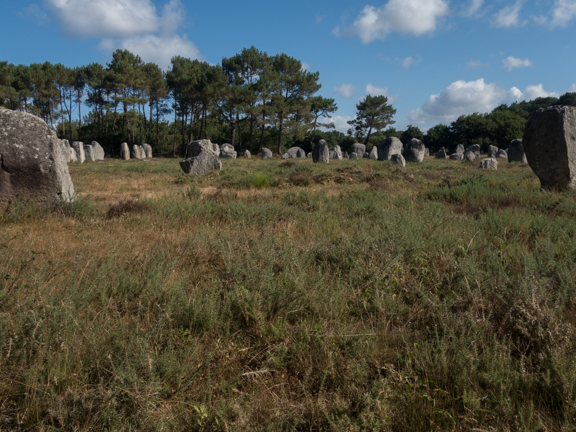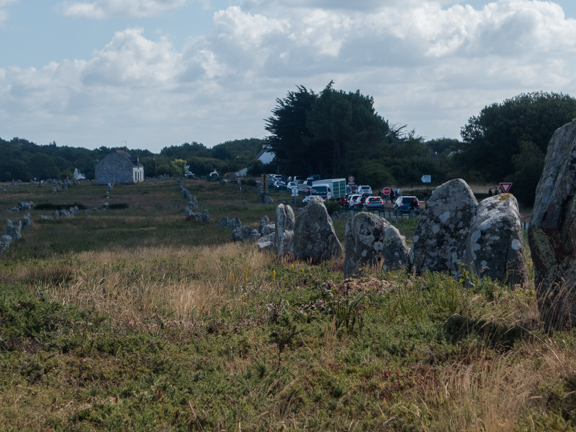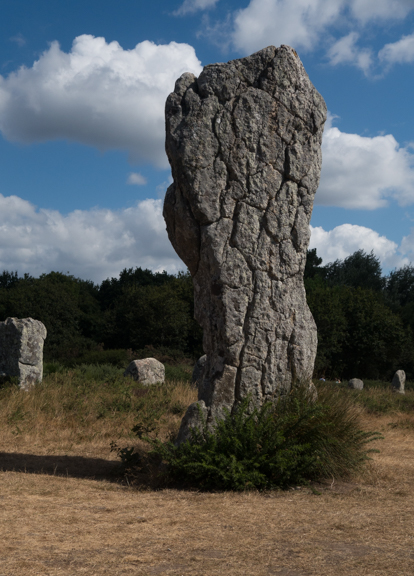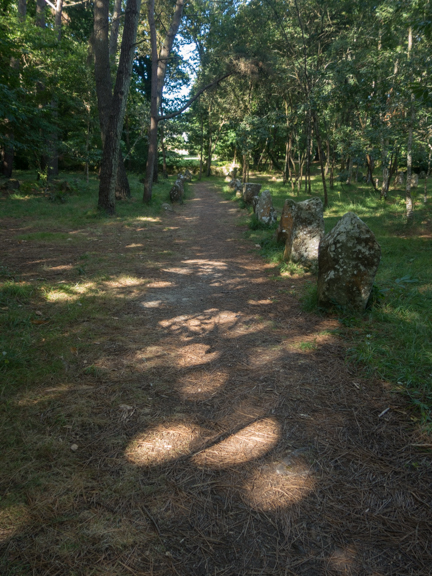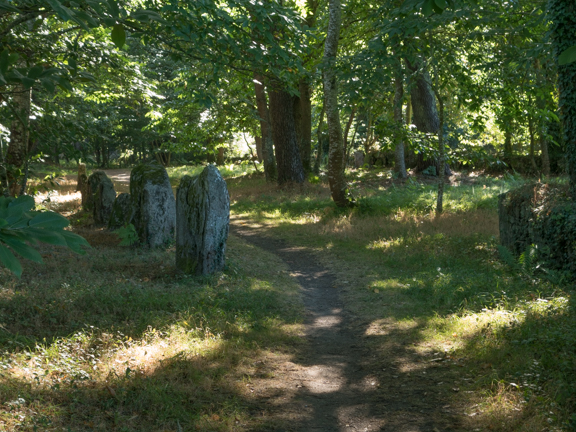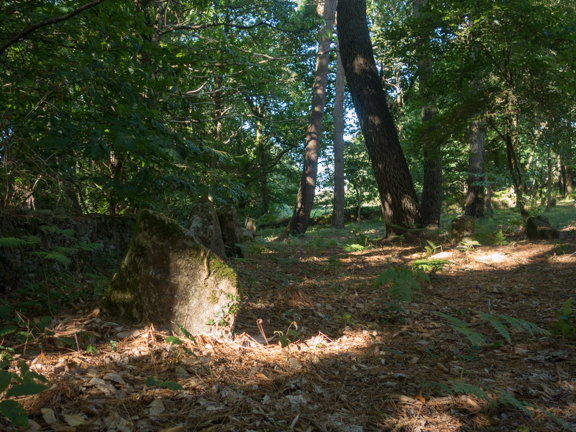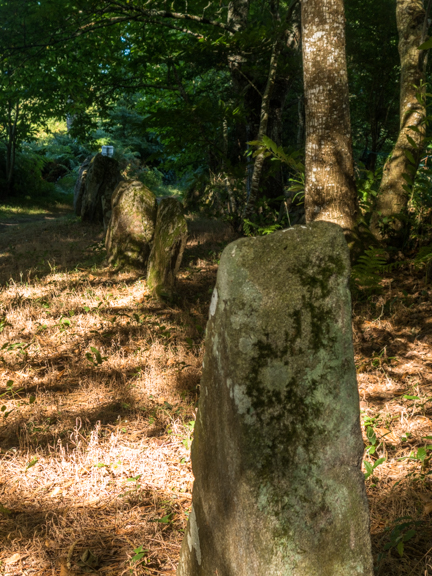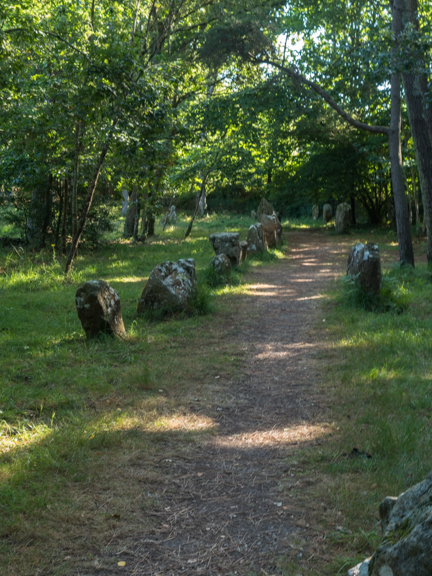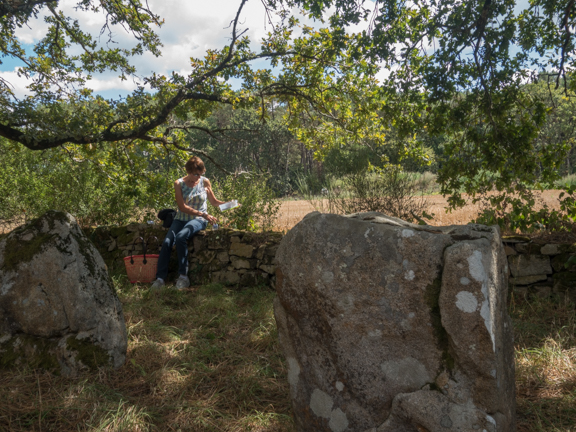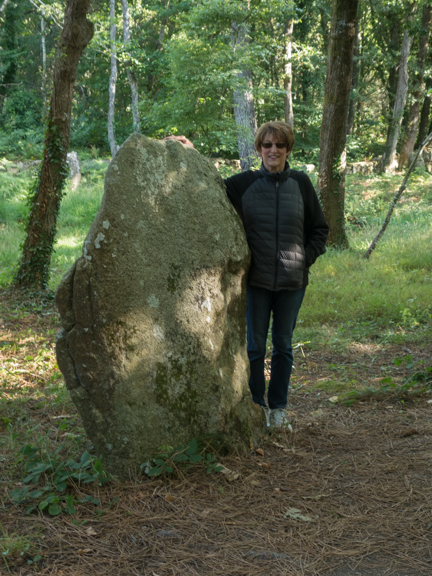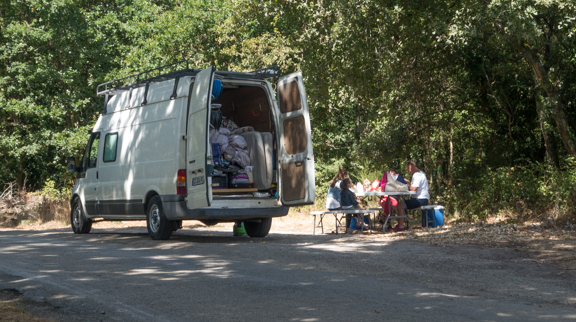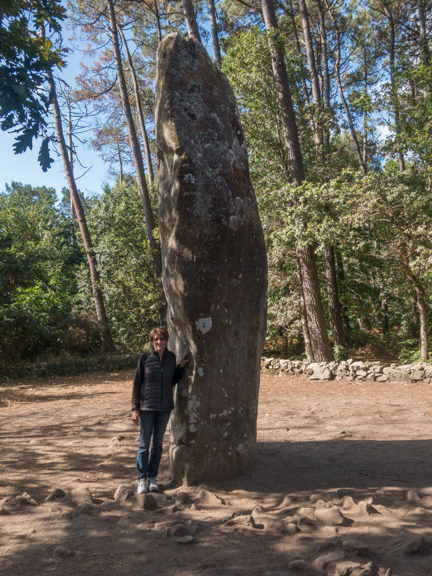We’re in Brittany, on the Presq’ile Quiberon to be exact, staying at friends Jamie and Hervé’s beautiful house in Saint-Pierre-Quiberon. It’s beautiful here and a very enjoyable place: lots of French vacationers, beautiful beaches on both sides of the peninsula, a pretty town on the water, great seafood. I’ll post some pictures of the area in a day or two; this post is about a place we find simply amazing: Carnac.
Carnac is the site of the largest stone alignments in the world. Brittany has the largest collection of alignments, menhirs (upright stones), dolmens (stone burial sites), and megaliths (menhirs that form a monument of some sort, such as an alignment) in the world and Carnac is its crown jewel. Carnac simply fascinates us. Here’s an overview of a small part of the Carnac alignments:
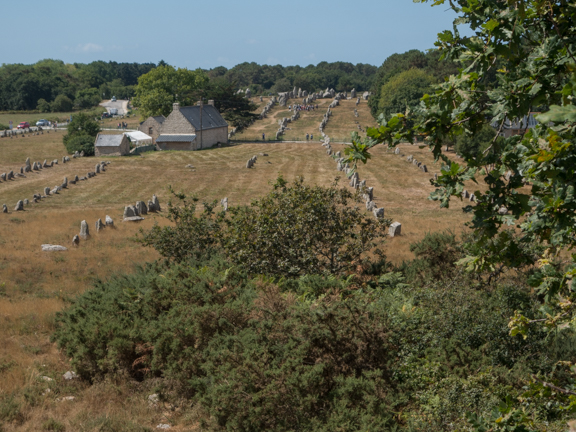
This shows maybe 15% of the alignments at Carnac.
The alignments are fenced, to prevent damage to them from visitors. I’m glad for that, and wish that had happened years ago. There are 3,000 stones in five different sites, but archaeologists believe that when Carnac was completed, there were double that. Where did the missing 3,000 go? They can be found in houses built in the area, in a nearby lighthouse, and in stone walls. Until 1960, the alignments were used as a campground! The only way to get into the alignments now, rather than seeing them from the perimeter, is to go on a guided tour (which limits foot traffic to certain areas), so we did that again (we did it last year, too). Some pictures from the tour:
Our guide concludes the tour with this comment: “If you ask, ‘Who did this?’ we can tell you. If you ask, ‘How did they do this?’ we can tell you that. If you ask, “Why did they do this?’ we cannot answer. No one knows why this was built.” Archaeologists are certain the purpose was not religious, as there are no religious artifacts found on the sites. Several theories hold that the alignments have a connection with celestial events: the rising of the sun or moon on the solstices or equinoxes, but the rows don’t align with anything like that, and, in fact, the rows in the different sites are aligned in slightly different directions. A society that can build something like this would have been able to do it more accurately. (In fact, there are hundreds of burial mounds, small alignments, and stone circles in Brittany, and none of them seem to accurately point to a celestial event.)
There are some other mysteries. The alignments were built between 4,000 BC and 2,500 BC, the Neolithic period. But archeologists have found no traces of Neolithic-period settlements around Carnac; the closest are several miles away. That means that the people who built Carnac came from some distance away (several miles would have been formidable 4,000 years ago). And whatever the reason for the construction of the alignments, it held the attention of these people for 1,500 years!
There is a “daddy” of them all: this menhir, larger than most of the stones in the biggest alignment, likely was raised centuries before the rest of them, as it is much more weathered. It appears that the rows of one of the biggest alignments were oriented to this menhir which did, in fact, have evidence of being a funeral stone.
I think Carnac fascinates us because of its mystery. For some unknown – and likely unknowable – reason, a society spent 1,500 years quarrying, moving and erecting huge stones in what must have been to them a meaningful pattern. This started 2,000 years before the first small pyramid was built in Egypt.
As I said, we’ve been to Carnac before, but there is one small alignment we’d not seen, so we went there first this time, and fell in love with it. The Alignements du Petit-Menec is the easternmost alignment, and although likely once connected to the other larger alignments, now sits isolated in a forest about a half a mile away. It’s not well marked; we drove past the entrance before we found it. But it is the only alignment you can walk into, and we found it entrancing. Some pictures (and remember that when it was constructed 4,000 years ago, this was not a forest; these would have been in the open):
We loved this place so much that we returned to have our pique-nique lunch here. Here’s Laurie preparing a sandwich in the company of a couple megaliths, first erected 4,000 years ago.
Laurie was also able to make sure this megalith didn’t fall over while we were there.
We thought we were pretty smart to have the fixings for a picnic with us. But, on the road at the entrance to these alignments we saw an example of a true French vacation pique-nique. The picnic table and bench came out of the truck, and look at what else is in the truck: full mattresses and enough camping stuff to outfit a Cabela store.
We later walked to the biggest menhir in the Carnac complex: the Géant de Manio, 20 ft high. Laurie was able to hold this one up, too.
One last look at the Carnac alignments and we headed back to the house.
 Nothing left to say except, we love this place. This certainly won’t be our last visit to Carnac; it has a strong pull on us.
Nothing left to say except, we love this place. This certainly won’t be our last visit to Carnac; it has a strong pull on us.


